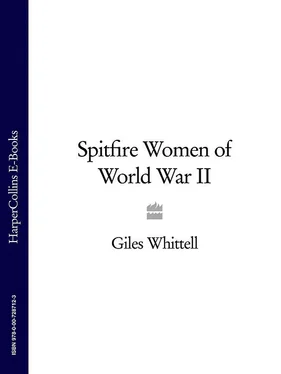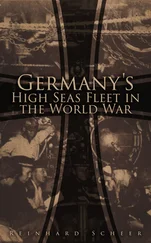Spitfires were so streamlined that when taxiing the heat produced by their engines had nowhere to go. Reginald Mitchell had removed the side-mounted radiators on the Supermarine seaplane on which he based his new design, replacing it with ineffectual slimline air intakes under the wings. If Spitfires weren’t released quickly into the air, the glycol in their cooling systems would boil. They hated sitting around once started up, but once off the ground they made their pilots sing.
Even four-engined bombers proved easily handled by the tiniest women pilots. But the Spitfire, without exception, was their favourite. Mary de Bunsen would rejoice when let loose in one by humming fugues from Bach’s B Minor Mass. Lettice Curtis warbled in prose: ‘To sit in the cockpit of a Spitfire, barely wider than one’s shoulders, with the power of the Merlin at one’s fingertips, was a poetry of its own,’ she wrote. ‘The long, flat-topped cowling and the pop-popping stub exhausts gave an almost breathtaking feeling of power, and the exhilaration of throwing it around, chasing clouds or low flying – strictly unauthorised in our case – was something never to be forgotten by those who experienced it.’
And who would experience it? The arrival of the Americans risked dividing the women of the ATA. Would they all be as bumptious as Jackie Cochran? Could they fly? Were they really needed? But the yearning to fly Spitfires, and to a lesser extent Hurricanes, was something they all shared. This, no less than their desire to be involved in the war, was what accounted for their steady convergence on southern England, not just from across Britain and the United States but from Poland, Chile, Argentina and the Dominions.
Most of them believed passionately in the Allied cause, but all could have served it elsewhere and less dangerously had they not become smitten with the idea of flying the most thrilling aeroplane yet built. And verdant, crowded, hungry England was the only place in the world where they would be allowed to do it.
For the pilots, the war meant virtual parity of opportunity with men, eventual parity of pay, and all the flying they could handle. For their mentors, Pauline Gower and Jackie Cochran, it seemed to be a stepping-stone to an elevated yet egalitarian future. ‘I would say that every woman should learn to fly,’ Gower declared in an interview for the April 1942 issue of Woman’s Journal . ‘Psychologically, it is the best antidote to the manifold neuroses which beset modern women. The war has already accomplished much in this regard, but with the return of peace my advice to all women will still be – “Learn to fly”.’
Jackie Cochran would have seconded that, but she wanted to do more than liberate modern women from their ‘neuroses’. She wanted to change men’s minds about women. The spring of 1942 found them both shuttling between White Waltham and London, politicking while their protégées hurtled round the skies above them. Their styles were diametrically opposite, but their goals were complementary. In a world turned upside-down, they even seemed achievable.
On the evening of 30 March that year, a rare joint appearance by Gower and Cochran set off an explosion of flashbulbs in Leicester Square. They had arrived together for the première of They Flew Alone , a hastily shot feature starring Anna Neagle about a woman pilot more famous than either of them would ever be. Her life had inspired many of the Spitfire women, but her death the previous year, at this point still shrouded in mystery, had prefigured many of their disappointments. Her name was Amy Johnson.
2
The film playing at Leicester Square that March night in 1942 depicted one of the most spectacular lives of the thirties, and one of the more mysterious deaths of the war. Towards the end of the film there is a scene set at Squire’s Gate aerodrome outside Blackpool.
The date is 4 January 1941. The time is 11.45 a.m. Mist shrouds the aerodrome buildings, but within sight of them a bulky twin-engined Airspeed Oxford, both propellers spinning, sits on the concrete apron. In the cockpit is Amy Johnson, Hull fish merchant’s daughter, ferry pilot and celebrity. Without her example of reckless daring over the previous ten years it is doubtful that the ATA would have had a pool of trained women pilots to call on, let alone an army of women volunteers hoping to be trained from scratch. As she waits she smokes a cigarette and chats to a refueller who has climbed into the co-pilot’s seat to keep her company; she is hoping for better weather.
The scene unfolds on film as in life, except that in They Flew Alone Amy Johnson’s face is Anna Neagle’s – a thing of perfect skin and symmetry, and pluck shining from her very eyes. In real life the face was longer; a mournful-looking oval. Even so, despite a washed-out Christmas at Prestwick’s Orangefield Hotel, with nothing to stare at for six days but fog, everyone Amy Johnson talked to over those last few days recalled that she seemed unusually content.
In the film she talks like Eliza Doolittle after Professor Higgins’s ministrations. In life, a trace of a Hull accent lingered despite years of elocution lessons. In the film, when a third figure emerges from the mist to report that the weather’s just as bad right down to Oxfordshire, she glances up at him and makes the only decision that was in fact imaginable for Amy Johnson. She says she will ‘crack through and fly over the top’. In reality she said something very similar.
For most of the 164 women who ferried planes for the ATA during the war it was the pinnacle of their flying careers, unrepeatable after the war even as men went supersonic, into orbit and to the moon. For Amy Johnson it was something of a come-down, and a point of realisation that her celebrity could no longer cleave a path through Britain’s hidebound bureaucracy. She had wanted a wartime role crafted specially for her, pioneering fast new airline routes to bind beleaguered Britain closer to her colonies, or swooping into northern France (before it fell) to keep young Tommy chipper. She offered to advise the Air Ministry – on what she wasn’t sure. As it turned out, the Air Ministry had plenty of advisors.
Johnson had been overlooked for head of the ATA’s women’s section in favour of Pauline Gower, and even when Gower begged her to join she had to take a test. Once a ferry pilot, she had to leave her Astrakhan-collared flying coats in storage and wear navy worsted and a forage cap. And she had to share common rooms and taxi planes with the other girls even though, as she commented to her father, they practically worshipped her. Was this any way to treat the most famous woman pilot in the world?
Eleven years before that dank morning at Squire’s Gate, Johnson had been sitting in another cockpit waiting for another weather window. This time the aircraft was a De Havilland Gipsy Moth, the Morris Traveller of the skies, a dope-and-canvas biplane built to cruise at 90 mph. Amy had named it Jason , which was the telegraphic address of her father’s fish business. The venue was Croydon Airport. She had tried once already to take off but had failed to get the throttle forward fast enough to compensate for the weight of two extra fuel tanks and had pulled up a few feet from the perimeter fence. Now she tried again. Her father and a small group of friends watched from the tarmac in front of the aerodrome hotel. Jack Humphreys, her mentor and engineering tutor, had a sense of what she was getting into and was rigid with tension. William Johnson, down from Hull specially for this, had even less idea than his daughter of the risks she was running.
This time the Moth just cleared the fence. It staggered over the rows of houses beyond, its tiny engine (one tenth as powerful as the least powerful Spitfire’s) hammering up into the westerly wind. Johnson climbed over Purley Rise and the Selsden Park golf course and levelled out over the waking villages of Kent. She set course for Vienna.
Читать дальше












